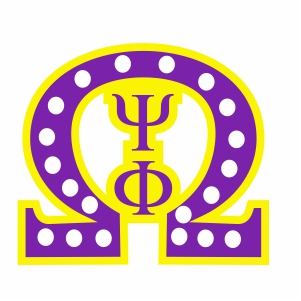

His concluding thought was, "We can not go out from this place and occasion without refreshment of faith and renewal of confidence that in every exigency our Negro fellow citizens will render the best and fullest measure of service whereof they are capable." His graduation speech was entitled, "The Progress of a People", and highlighted the accomplishments to date of African-Americans since the Civil War. The first sitting president to speak at Howard was Calvin Coolidge in 1924. Sterling Allen Brown served as chair of the Department of English. Franklin Frazier served as chair of the Department of Sociology. Historian Rayford Logan served as chair of the Department of History. Stokely Carmichael, also known as Kwame Toure, a student in the Department of Philosophy and the Howard University School of Divinity, coined the term " Black Power" and worked in Lowndes County, Alabama as a voting rights activist. These protests continued until the fall of 1944. at cigar stores and cafeterias which refused to serve them because of their race.


By January 1943, students had begun to organize regular sit-ins and pickets around Washington, D.C. This tactic was to play a prominent role in the later Civil Rights Movement. Beginning in 1942, Howard University students pioneered the "stool-sitting" technique of occupying stools at a local cafeteria which denied service to African Americans, blocking other customers waiting for service. Ralph Bunche, the first Nobel Peace Prize winner of African descent, served as chair of the Department of Political Science. The Bahá'í and philosopher Alain Locke, chair of the Department of Philosophy and first African American Rhodes Scholar, authored The New Negro, which helped to usher in the Harlem Renaissance. Howard University played an important role in the Civil Rights Movement on a number of occasions. In the 1930s, Howard University still had segregated student housing. Despite appeals from Eleanor Roosevelt, Howard saw its budget cut below Hoover administration levels during the presidency of Franklin D. The Great Depression years of the 1930s brought hardship to campus. įrom 1926 to 1960, preacher Mordecai Wyatt Johnson was Howard University's first African-American president. In 1912, during his historic journey to the west, Bahá'í Faith leader 'Abdu'l‑Bahá addressed an integrated gathering in Rankin Chapel at Howard University in which he declared the oneness of all people, the elimination of racial prejudice and segregation and the urgent need for race amity. Howard Hall was renovated and made a dormitory for women. Department of Education, funds Howard University and Howard University Hospital.) In its first five years of operation, Howard University educated over 150,000 freed slaves. (In the 20th and 21st centuries, an annual congressional appropriation, administered by the U.S. Congress chartered Howard on Maand much of its early funding came from endowment, private benefaction and tuition. Howard later served as president of the university from 1869 to 1874. The new institution was named for General Oliver Otis Howard, a Civil War hero who was both the founder of the university and, at the time, commissioner of the Freedmen's Bureau. Within two years, the university consisted of the colleges of liberal arts and medicine. Within a few weeks, the project expanded to include a provision for establishing a university. Shortly after the end of the American Civil War, members of the First Congregational Society of Washington considered establishing a theological seminary for the education of black clergymen. T. Inoue, E. Oset and M. J. Vicente Vacas, Phys.


 0 kommentar(er)
0 kommentar(er)
